Singapore may be small in size, but this dynamic city-state packs an incredible punch when it comes to tourist attractions. From futuristic gardens and world-class wildlife experiences to cultural enclaves and architectural marvels, Singapore offers something for every type of traveler. If you’re planning a visit, here’s your essential guide to the 15 must-see attractions that showcase the best of Singapore.

Gardens by the Bay: A Futuristic Green Wonder
Gardens by the Bay stands as Singapore’s most iconic green space, spanning 250 acres of reclaimed land. This award-winning horticultural destination features three waterfront gardens: Bay South, Bay East, and Bay Central.
The highlight is undoubtedly the Supertree Grove – 12 towering vertical gardens that reach heights of up to 50 meters. These tree-shaped structures are covered in over 162,900 plants and equipped with sustainable features like solar panels. Don’t miss the free Garden Rhapsody light and sound show that brings these giants to life each evening.
Inside the climate-controlled conservatories, you’ll find the Flower Dome (the world’s largest glass greenhouse) and the Cloud Forest, featuring a 35-meter-tall indoor waterfall cascading down a plant-covered mountain. The Flower Dome houses plants from Mediterranean and semi-arid regions, while the Cloud Forest recreates the cool, moist conditions found in tropical mountain regions.
Whether you’re a nature lover, photography enthusiast, or architecture buff, Gardens by the Bay offers a glimpse into Singapore’s vision of becoming a “city in nature.”
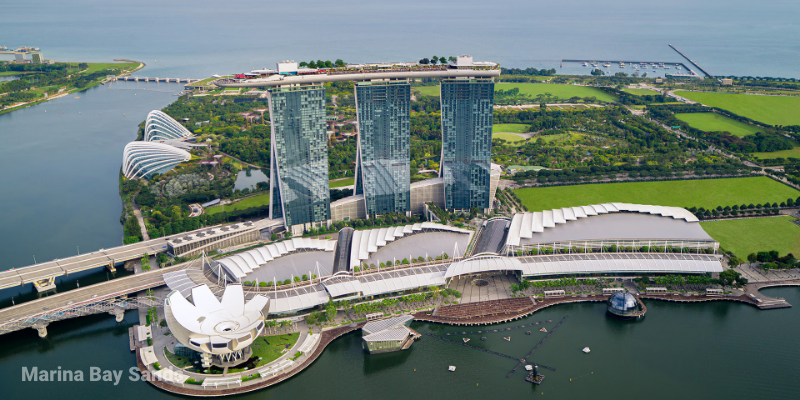
Marina Bay Sands: Architectural Marvel and Luxury Destination
The triple-towered Marina Bay Sands has become synonymous with Singapore’s skyline. This integrated resort complex houses a luxury hotel, convention center, shopping mall, museum, restaurants, and the world’s largest rooftop infinity pool.
The SkyPark Observation Deck on the 57th floor offers breathtaking 360-degree views of the city skyline and Marina Bay. While the infinity pool is reserved for hotel guests, the observation deck is open to all visitors for a fee.
Below the towers, The Shoppes at Marina Bay Sands features over 170 premium brands and several celebrity chef restaurants. The complex also includes the lotus-shaped ArtScience Museum, which hosts cutting-edge exhibitions combining art, science, technology, and culture.
In the evenings, catch the free Spectra light and water show that illuminates the bay with fountains, visual projections, and laser effects.
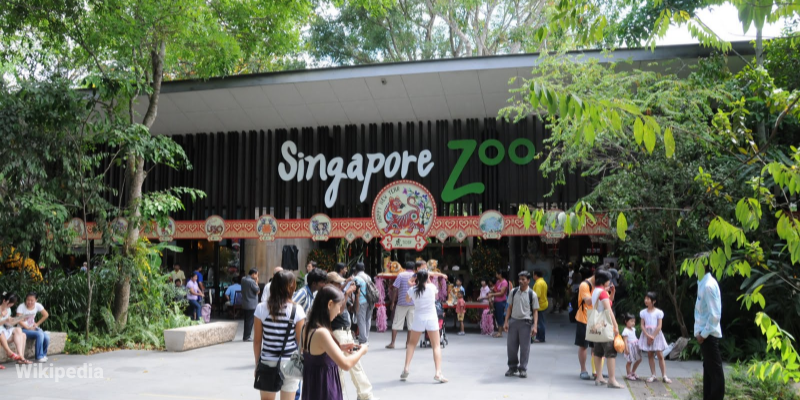
Singapore Zoo: Wildlife Encounters in Natural Habitats
The Singapore Zoo has earned international acclaim for its “open” captivity model, where animals live in spacious, naturalistic habitats with hidden barriers instead of cages. Spanning 26 hectares, the zoo is home to over 4,200 animals representing 300 species.
Highlights include the world’s largest captive colony of orangutans, which can be observed swinging freely through the trees during their breakfast session. The Wild Africa zone lets you get surprisingly close to zebras, giraffes, and lions, while the Fragile Forest biodome recreates a tropical rainforest ecosystem complete with flying foxes and lemurs.
The zoo offers various shows and feeding sessions throughout the day, allowing visitors to witness animal behaviors up close. For a different perspective, take the guided tram tour or book special experiences like the Breakfast with Wildlife program.
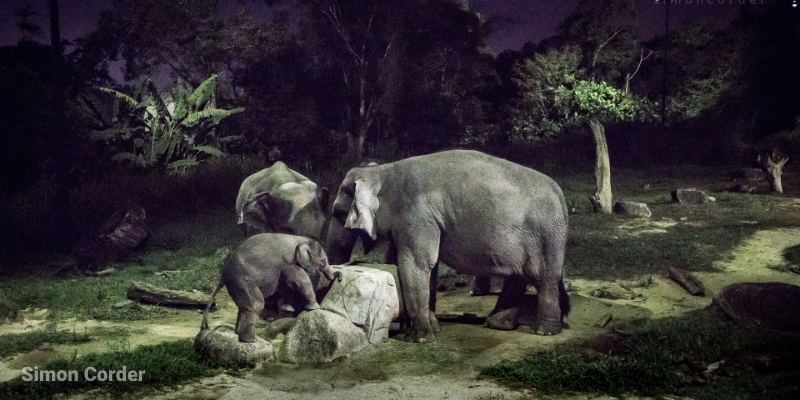
Night Safari: Nocturnal Animal Adventure
Adjacent to the Singapore Zoo, the Night Safari was the world’s first nocturnal wildlife park when it opened in 1994. This unique attraction allows visitors to observe over 900 animals from nearly 100 species in their active nighttime state.
The park is divided into seven geographical zones that you can explore either on foot via walking trails or aboard the 40-minute guided tram ride. The carefully designed lighting mimics moonlight, allowing visitors to see the animals while minimizing disruption to their natural behaviors.
Highlights include the Fishing Cat Trail, where you might spot these adept swimmers catching fish; the Leopard Trail with its stealthy predators; and the East Lodge Trail with pangolins and slow lorises. The park also offers cultural performances and a Creatures of the Night show.
For the best experience, arrive early to beat the crowds and allow at least 2-3 hours to explore fully.
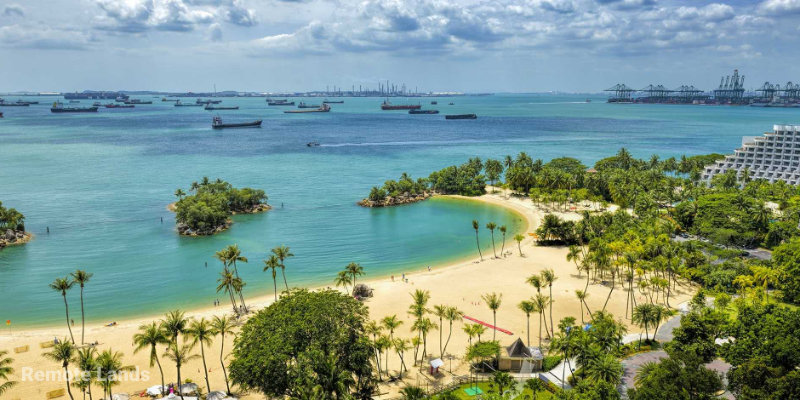
Sentosa Island: Singapore’s Playground
Connected to the mainland by a boardwalk, cable car, and monorail, Sentosa Island is Singapore’s premier resort getaway and entertainment hub. This 500-hectare island offers something for everyone – from thrill-seekers to beach lovers.
Universal Studios Singapore takes center stage with its seven themed zones and 28 rides and attractions. Nearby, S.E.A. Aquarium houses more than 100,000 marine animals, including manta rays and sharks in the Open Ocean Habitat.
Beach enthusiasts can relax on the golden sands of Siloso, Palawan, or Tanjong beaches. Adventure seekers can try attractions like the Mega Zip (Singapore’s steepest zip line), indoor skydiving at iFly, or the Skyline Luge.
Don’t miss the Wings of Time night show – a multimedia spectacle of water displays, laser effects, and fireworks set against the backdrop of the open sea.
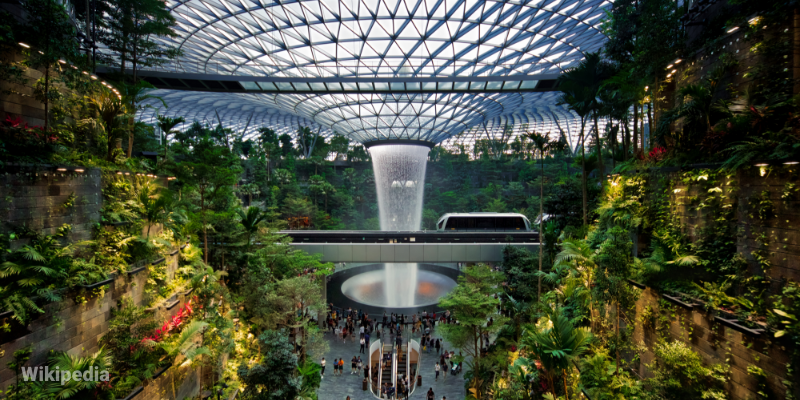
Jewel Changi Airport: More Than Just a Transit Hub
Few airports in the world double as tourist attractions, but Jewel Changi Airport has transformed the travel experience into a destination itself. This nature-themed entertainment complex connects Changi Airport‘s terminals under a stunning glass and steel dome.
The centerpiece is the HSBC Rain Vortex, the world’s tallest indoor waterfall at 40 meters high. Surrounded by terraced gardens called the Shiseido Forest Valley, the waterfall transforms into a canvas for a mesmerizing light and sound show each evening.
Beyond the natural elements, Jewel houses over 280 retail and dining options, including some open around the clock. Fun attractions include the Canopy Park with its hedge and mirror mazes, bouncing nets, and Foggy Bowls where kids can play among mist-filled concave bowls.
Even if you’re just transiting through Singapore, a few hours at Jewel offers a perfect taste of what makes this city-state so special.
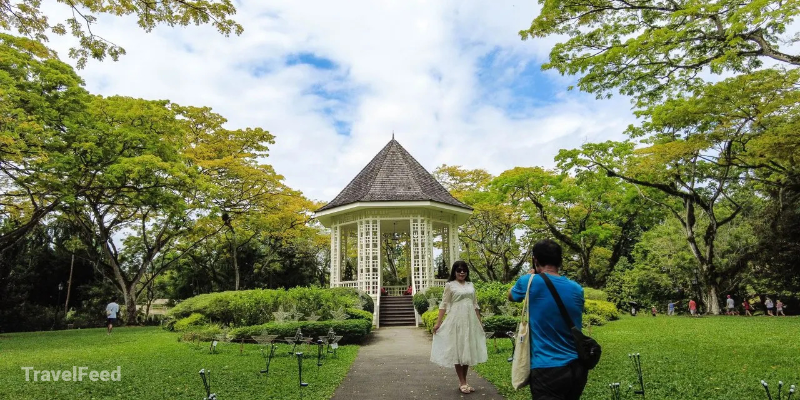
Singapore Botanic Gardens: Historic Tropical Paradise
Established in 1859, the Singapore Botanic Gardens represents a different kind of garden experience from the modern Gardens by the Bay. As Singapore’s first UNESCO World Heritage Site, these historical gardens have played a crucial role in the region’s botanical research.
Spanning 82 hectares, the gardens offer various specialized areas, including the Evolution Garden, which traces plant life’s journey through time, and the Ethnobotany Garden, showcasing plants used by Southeast Asia’s indigenous cultures.
The jewel in the garden’s crown is the National Orchid Garden, home to the world’s largest collection of orchids with over 1,000 species and 2,000 hybrids. The VIP Orchid Garden features orchids named after visiting dignitaries and celebrities – a unique Singapore tradition.
With free entry to most areas (except the Orchid Garden), relaxing swan-filled lakes, and regular outdoor concerts at Symphony Lake, the Botanic Gardens perfectly blend history, science, and recreation.

Merlion Park: Meeting Singapore’s National Icon
No visit to Singapore is complete without seeing its national mascot – the Merlion, a mythical creature with a lion’s head and fish body. The most famous Merlion statue stands at Merlion Park overlooking Marina Bay.
Standing 8.6 meters tall and spouting water from its mouth, the statue represents Singapore’s origins as a fishing village (the fish body) and its original name, Singapura, meaning “lion city” (the head). The park offers perfect photo opportunities with Marina Bay Sands in the background.
While primarily a photo spot rather than an attraction requiring extensive time, the area around Merlion Park is worth exploring. The surrounding promenade leads to the historic Fullerton Hotel (formerly the General Post Office) and the Esplanade performing arts center, affectionately nicknamed “the Durian” for its spiky appearance.
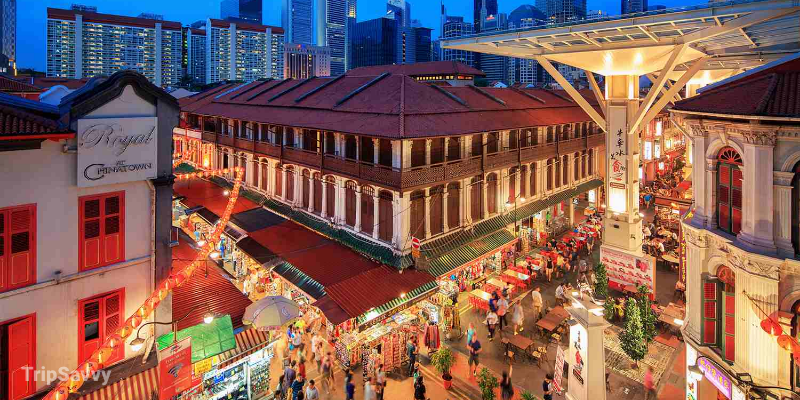
Chinatown: Cultural Heritage and Culinary Delights
Singapore’s Chinatown is one of the city’s most vibrant districts, where historic temples stand alongside trendy bars and traditional medicine halls neighbor modern boutiques. This cultural enclave offers a glimpse into the lives of Singapore’s early Chinese settlers.
The Buddha Tooth Relic Temple and Museum is a spectacular five-story temple housing what is claimed to be the left canine tooth of Buddha. Nearby, the Sri Mariamman Temple (Singapore’s oldest Hindu temple) and Jamae Mosque demonstrate the district’s religious diversity.
Foodies shouldn’t miss Chinatown Complex Food Centre, Singapore’s largest hawker center with over 200 stalls. Try local favorites like Hainanese chicken rice, char kway teow (stir-fried noodles), and bak kut teh (pork rib soup).
For shopping, browse the lively street markets along Pagoda Street and Trengganu Street for souvenirs, textiles, and handicrafts. The Chinatown Heritage Centre provides insight into the lives of early immigrants through recreated living quarters.
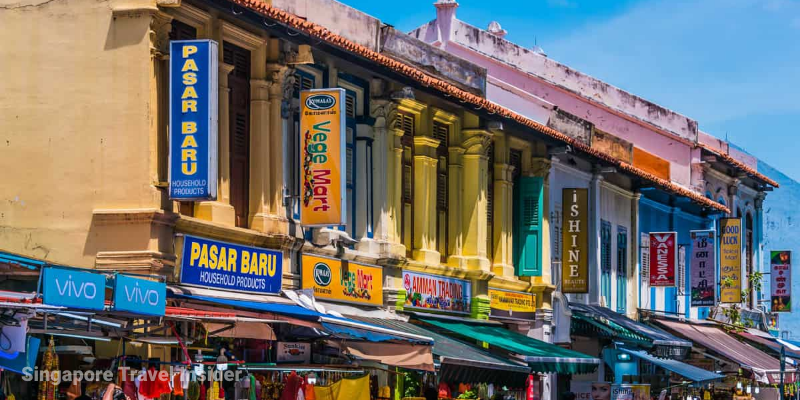
Little India: Vibrant Colors and Rich Traditions
Little India pulsates with energy, color, and the fragrant scents of spices and jasmine garlands. This ethnic district offers an authentic slice of Indian culture in the heart of Singapore.
The ornate Sri Veeramakaliamman Temple, dedicated to the Hindu goddess Kali, stands as the neighborhood’s spiritual center. Nearby, the House of Tan Teng Niah is a rare surviving Chinese villa, now painted in rainbow colors and popular for photos.
Mustafa Centre, a 24-hour shopping mall, has achieved legendary status for selling everything imaginable at competitive prices. For a more traditional shopping experience, browse the shops along Serangoon Road for textiles, jewelry, spices, and ayurvedic products.
Food is a highlight in Little India, from South Indian vegetarian thali sets to North Indian tandoori specialties. Don’t miss the Tekka Centre for authentic Indian street food or the Fish Head Curry, a uniquely Singaporean-Indian dish.
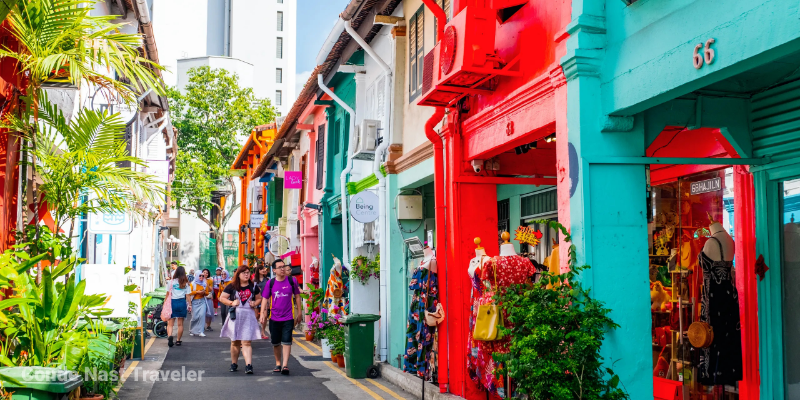
Kampong Glam: Singapore’s Arab Quarter
Once the seat of Malay royalty in Singapore, Kampong Glam has evolved into a trendy neighborhood that perfectly blends heritage and hipster culture. At its heart stands the magnificent Sultan Mosque (Masjid Sultan) with its golden dome, serving as the focal point of Muslim life in Singapore.
Haji Lane, a narrow street lined with colorful shophouses, has transformed into one of Singapore’s most Instagram-worthy spots, with independent boutiques, specialty coffee shops, and vibrant street art. Nearby Arab Street is famous for its textile shops selling beautiful fabrics and carpets.
The Malay Heritage Centre, housed in the former Istana (palace) of the Malay sultans, offers insights into Singapore’s Malay community through interactive exhibits and cultural programs.
For food, sample authentic Middle Eastern cuisine like kebabs, mezze platters, and sweet treats like baklava, alongside traditional Malay dishes such as nasi padang and murtabak.
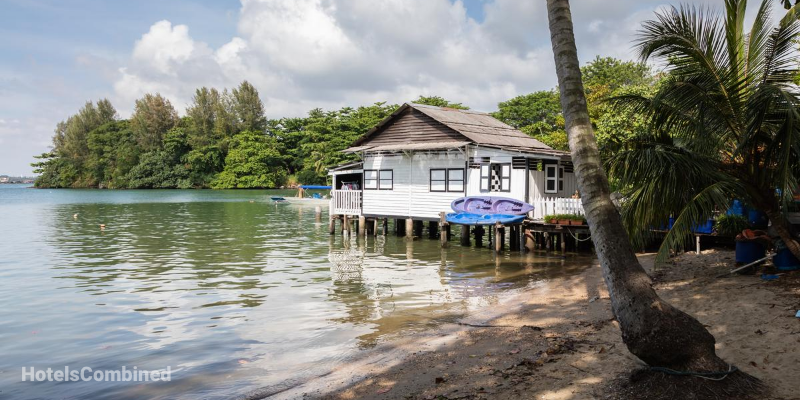
Pulau Ubin: Step Back in Time
For a glimpse of Singapore before rapid development, take a 10-minute bumboat ride to Pulau Ubin, a rustic island off the northeastern coast. One of the last rural areas to remain largely undeveloped, Pulau Ubin offers a refreshing escape from the city’s sleek modernity.
The island has fewer than 50 residents today, living in kampongs (villages) much like Singaporeans did in the 1960s. The best way to explore is by renting a bicycle to navigate the island’s undulating terrain and forested trails.
Chek Jawa Wetlands, a unique ecosystem on the eastern tip of the island, features a 1-kilometer boardwalk that takes visitors through multiple habitats, from coastal forests to mangroves and seagrass lagoons. The island is also home to wild boars, monkeys, and numerous bird species.
Pack water and snacks, as amenities are limited to a few simple restaurants near the ferry landing. For nature lovers seeking an off-the-beaten-path experience, Pulau Ubin provides a welcome counterpoint to Singapore’s urban intensity.

Southern Ridges: Urban Hiking with Skyline Views
The Southern Ridges comprise a 10-kilometer trail connecting five parks along Singapore’s southern ridge. This urban hiking route offers some of the best panoramic views of the city, harbor, and southern islands.
The most photographed section is Henderson Waves, Singapore’s highest pedestrian bridge at 36 meters above the road. Its distinctive wave-like structure, made of curved steel and timber, is illuminated with LED lights each evening.
Other highlights include the Forest Walk, an elevated metal walkway through the secondary forest canopy; the Alexandra Arch, a leaf-shaped bridge; and the Canopy Walk through the treetops of the Telok Blangah Hill Park.
The trail also passes through HortPark, a gardening hub with themed plots showcasing different landscaping styles and plant collections. The entire route takes about 3-5 hours to complete, but you can easily access specific sections if time is limited.

National Gallery Singapore: Southeast Asian Art Treasure Trove
Housed in two of Singapore’s most historic buildings – the former Supreme Court and City Hall – the National Gallery Singapore boasts the world’s largest public collection of Singaporean and Southeast Asian art.
With over 8,000 works spanning from the 19th century to the present day, the gallery showcases the region’s rich artistic heritage and contemporary creativity. The UOB Southeast Asia Gallery presents the epic narrative of the region’s art history, while the DBS Singapore Gallery focuses specifically on Singaporean artists.
Beyond the art, the buildings themselves are architectural masterpieces. The stunning rotunda dome of the former Supreme Court and the meticulously restored colonial interiors provide a fascinating backdrop to the exhibitions.
The gallery also offers excellent dining options, including the rooftop restaurant Smoke & Mirrors with panoramic views of the Padang and Marina Bay.
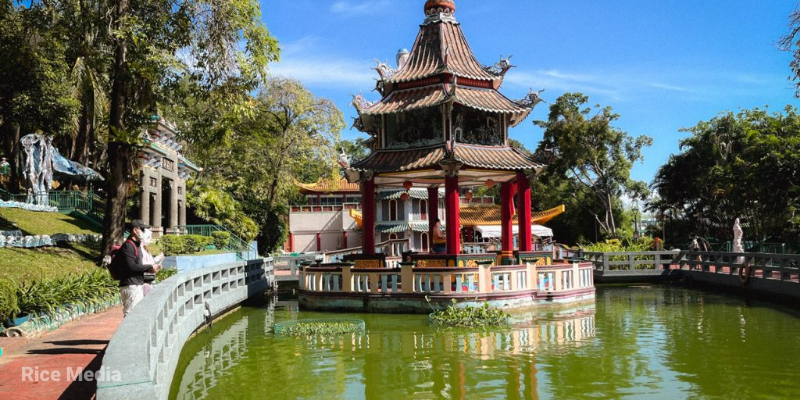
Haw Par Villa: Singapore’s Strangest Cultural Park
For something truly unique, visit Haw Par Villa, an outdoor art park featuring over 1,000 colorful statues and dioramas depicting scenes from Chinese mythology, folklore, and Confucian teachings.
Built in 1937 by the brothers who created Tiger Balm, this quirky attraction is best known for its graphic depictions of the Ten Courts of Hell in Chinese mythology, showing the punishments awaiting various sinners. These oddly fascinating displays include scenes of sinners being thrown onto a hill of knives or having their tongues pulled out.
Other areas feature dioramas of Chinese legends like Journey to the West and the Eight Immortals, as well as scenes depicting virtues like filial piety. Recent restoration work has revitalized many of the exhibits, adding context through multimedia displays and guided tours.
While perhaps not for the faint-hearted or very young children, Haw Par Villa offers a fascinating glimpse into traditional Chinese moral values and mythology presented in a uniquely Singapore way.
Conclusion
Singapore’s top attractions reflect its unique character as a global city that respectfully preserves diverse cultural traditions while boldly embracing innovation. Whether you’re drawn to natural wonders, architectural marvels, cultural experiences, or culinary adventures, these 15 attractions provide an excellent framework for exploring this remarkable island nation.
While this list highlights the most famous spots, Singapore rewards travelers who venture beyond the obvious. Consider allowing at least 4-5 days to explore these attractions without rushing, and don’t forget to leave time for Singapore’s other claim to fame – its incredible food scene at hawker centers and restaurants throughout the city.
With excellent public transportation, a compact urban footprint, and attractions that often operate into the evening hours, Singapore makes it easy to pack multiple experiences into each day of your visit. Just remember to stay hydrated and take occasional breaks in the air conditioning to escape the tropical heat and humidity.
Book Your Chauffeur Service Today
Whether you’re exploring Singapore’s top attractions or simply heading from your hotel to Changi Airport, the benefits of a Chauffeur Service or Airport Transfer Service are clear: door-to-door comfort, time saved, and the freedom to focus on enjoying each experience without worrying about traffic or parking. By arranging your transfer in advance, you’ll move seamlessly through the city’s cultural highlights and arrive at the airport relaxed and ready for your next adventure.























